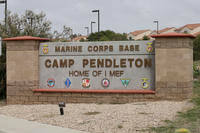It was October 1943 and a young Coast Guard aviator witnessed a demonstration of a new machine built by Dr. Igor Sikorsky. The adventuresome pilot was awestruck and captivated by its possibilities, he requested to train with the new aircraft immediately.
This machine was the helicopter and the pilot was Stewart Graham.
Graham got his wish to fly the machine and after only three and a half hours of flight instruction, he was officially a helicopter pilot.
Designated as Coast Guard helicopter pilot #2 – preceded only by Graham’s instructor and Coast Guard helicopter pilot #1, Capt. Frank Erickson – Graham’s three hours of instructions launched a truly remarkable career.
Reflecting upon his training, Graham wrote: “It was an extraordinary way to graduate; no written test, no diploma and no curriculum to follow thereafter. Dr. Igor Sikorsky identified those men who soloed at his factory as pioneers. As such, I was set free to penetrate the unknown, with an unleashed, unreliable underpowered vibrating revolutionary type of flying machine.”
And what a revolution it was. With more than half a century passing since Graham’s retirement, Coast Guard aviators have gone on to save tens of thousands of lives through techniques first pioneered by Graham himself.
Graham is credited with many helicopter firsts, including the first wartime anti-submarine patrol requiring him to perform the first take-off and landing from a vessel on the high seas. In 1947 he successfully completed the Coast Guard’s first-ever night helicopter medical evacuation. As one of the first to use this technique, Graham was instrumental in exhibiting the capabilities and possibilities of rotary-wing technology to decision makers ensuring support for helicopter programs for decades to come.
But these triumphs were also met with trials and sometimes defeat.
Graham still remembers to this day what it was like to land at Air Station Brooklyn as his fellow aviators looked on in doubt.
“We brought it to the Coast Guard air station in Brooklyn and were ridiculed up and down,” said Graham. “We weren’t very popular and neither was the helicopter. But what look what happens as time went on.”
What happened as time went on was aviation pioneers like Graham and Erickson risked their careers, not to mention their lives, in testing and developing this new technology. Despite naysayers and even leadership who doubted the helicopter’s worth, the men prevailed.
Today the helicopter is irreplaceable to the Coast Guard.
“In the 52 years since he retired, Coast Guard aviators have saved over 150,000 lives through techniques first pioneered by Cmdr. Graham,” said Vice Commandant of the Coast Guard Vice Adm. John Currier, the service’s Ancient Albatross. “For example, during the Hurricane Katrina response alone, Coast Guard aircrews flew 1,817 sorties, completing 12,535 rescues by air, in just over two weeks. His legacy is our lifesaving capability.”
This legacy will live on for generations of Coast Guard aviators with the newly built CDR Stewart R. Graham Hangar at Air Station Cape Cod. The construction of the hangar at Air Station Cape Cod is especially symbolic, as Graham became the executive officer of Air Station Salem, the predecessor to Air Station Cape Cod, in 1957.
“It’s about the history and about the old paired with the new. Really taking the cutting edge technology of the Coast Guard and uniting it with such a prominent Coast Guard aviator like Cmdr. Graham,” said Petty Officer 1st Class Nicolas Lanthier, an avionics electrical technician at Cape Cod.
The 93,000 square foot hangar will house four of the Coast Guard’s new Ocean Sentry airplanes. This new asset significantly enhances the unit’s ability to support aviation missions and readiness along New England’s coastline. Better equipped to respond to search and rescue cases, perform over flights after natural disasters and carry out security missions, Cape Cod’s aircrews will recall Graham and those who have gone before them every time they enter the cockpit.
“Many live life wondering how they will be remembered,” reflected Petty Officer 1st Class Phillip Davis, aviation maintenance technician at Cape Cod. “What greater honor is there than to be recognized by the service that you have dedicated so much of your life to.”
“It is such an honor to continue the tradition and live by the principles that Cmdr. Graham pioneered,” said Lt. Dan Cloonan, a pilot at Cape Cod. “I am humbled to be given the opportunity to make a difference and follow in his footsteps.”



























